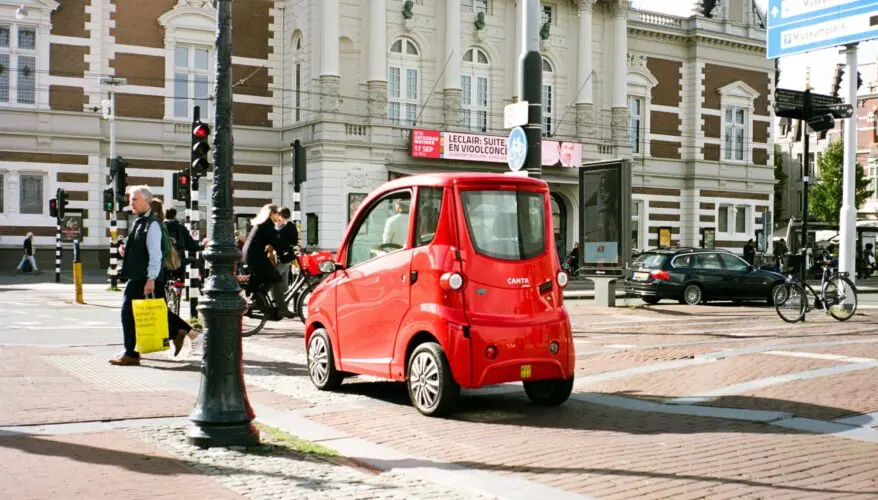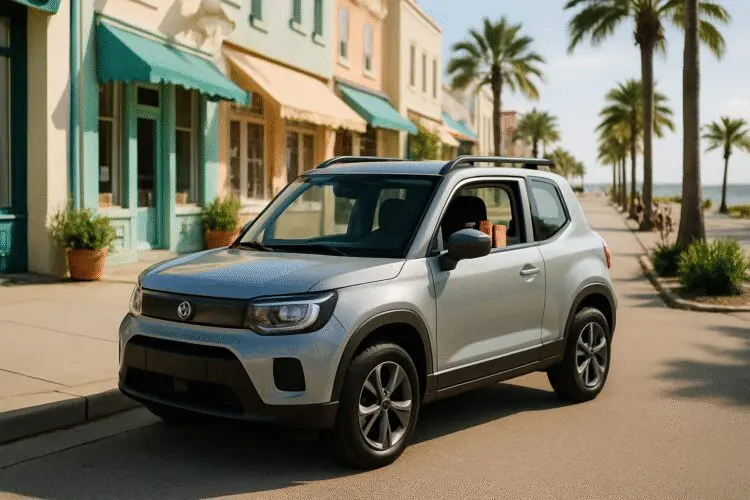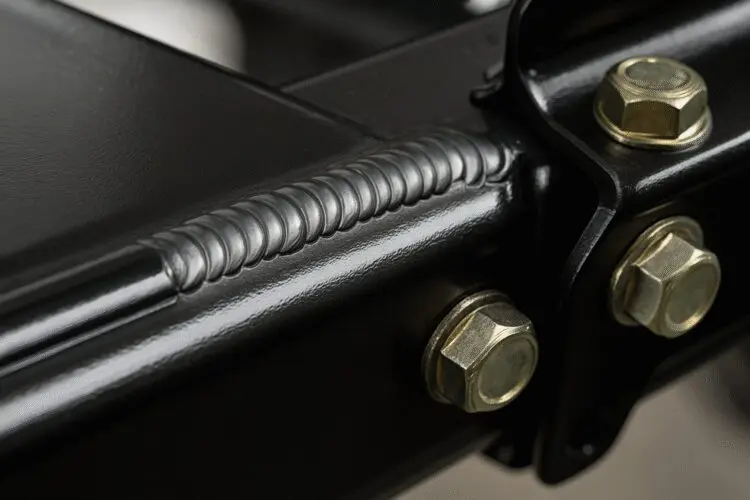Beyond Cars: The Thrill of Small-Displacement Motorized Vehicles

Small engines, big smiles. That’s the simplest way to describe the world of “small-displacement” motorized vehicles. These are machines powered by engines under 250 cc that squeeze surprising performance, versatility, and fun into petite frames. From 49 cc kid karts that zip around driveways to 150 cc mini cars tackling urban errands, these compact rides are rewriting the rules of mobility and recreation.
This comprehensive guide explores two overlapping universes: gas-powered ride-ons for kids (roughly 49-110 cc) and utility-minded mini cars in the ~150 cc class. You’ll find safety checklists, comparison tables, and real-world answers to decide which small-displacement vehicle best fits your family, hobby, or business.
Why “Small-Displacement” is A Big Deal
The appeal of these vehicles goes far beyond their size. Significant weight savings lead to better fuel economy and make them much easier to transport, while their lower purchase prices open the door for first-time owners and families on a budget.
For younger enthusiasts, youth models provide an excellent platform for teaching mechanical skills and responsible riding habits from an early age. Meanwhile, adults find that sub-250 cc machines often help them dodge the full-size licensing requirements and parking headaches associated with larger vehicles.
Two core categories dominate this space: first, kids’ ride-ons between 49 cc and 110 cc, where safety technology has evolved rapidly. The second category includes ~150 cc mini cars that blur the line between a golf cart and a compact automobile. Let’s dive in.
Gas-Powered Ride-Ons For Kids (49–110 Cc)
What Counts as a Kids’ Gas-Powered Vehicle?
Most manufacturers recommend 49-70 cc machines for ages 6-10 and 90-110 cc units for riders 10-14, but height, weight, and coordination matter more than birthday candles. It’s crucial to confirm model-specific rider limits and ensure a child can comfortably and safely operate the vehicle before purchasing.
Snapshot Comparison
| Category | Typical Engine (cc) | Top Speed* | Terrain | Built-in Safety |
| 4-Wheelers / Crossovers | 49-70 | 15-20 mph | Pavement & grass | Speed governor, wide wheelbase |
| Mini Motorcycles | 49-70 | 20-25 mph | Paved tracks | Disc brakes, chain guard |
| ATVs | 110 | 25-30 mph | Dirt & gravel | Tether kill-switch, nerf bars |
| Mini Buggies / Sport Cars | 110 | 25 mph | Mixed | Roll cage, 3-pt harness |
*Factory-limited; adjustable with throttle screws or ECU settings.
Deep-Dive by Category
4-Wheelers / Crossovers
Think of these as shrunken utility vehicles: four stable wheels, usually automatic transmissions, and enough clearance to hop over lawn edges. Parents appreciate handle-mounted speed limiters and remote shut-offs that provide an extra layer of control.
Mini Motorcycles
Pocket bikes ignite adrenaline but demand strong balance skills. When considering one, opt for models with responsive drum or disc brakes and always verify that the seat height matches the rider’s inseam for proper footing and control.
ATVs
With knobby tires and robust suspension, youth ATVs are built to tame dirt lots and light trails. Key safety features include full-coverage footwells to protect legs and single-lever front brakes. As riders gain experience, a vehicle such as a 125cc ATV from NTX Power Sports can serve as a great example of the features available in this category.
Mini Buggies & Sport Cars
These pint-size dune buggies charm kids with real steering wheels, bucket seats, and head-turning styling. For this category, a tubular roll cage and a 3-point safety harness are non-negotiable safety must-haves.
Safety Features & Standards
Modern ride-ons come equipped with essential safety tech. Throttle limiters allow parents to set a maximum throttle opening until skills grow. A remote kill-switch is another popular feature, giving a parent a fob that can shut the engine off instantly from a distance.
Furthermore, familiarize yourself with the CPSC Youth ATV Categories. The U.S. Consumer Product Safety Commission provides guidelines matching engine size to age brackets to ensure a proper fit.[a]
Specs & Basic Maintenance
Most of these engines are air-cooled for simplicity, though some 110 cc units add oil coolers for better performance. They typically run on standard unleaded 87-octane fuel, but it’s best to use blends with under 10% ethanol. Soft-compound, low-pressure tires are common as they help absorb bumps, so be sure to check the tire pressure before every ride.
A quick-hit service schedule based on hours of operation often looks like this: change the break-in oil at 10 hours, lube the chain and inspect brake pads at 25 hours, and adjust valves or change the spark plug at 50 hours.
How to Choose the Right Ride-On
When selecting a vehicle, prioritize fit first: can the child plant both feet on the ground and reach all controls comfortably? More cc’s are not always safer, especially if the throttle response is jerky for a novice rider. Look for solid build quality and check on the warranty and parts availability to avoid future downtime.
Kids’ Ride-On FAQ
Gas vs. electric: what’s safer?
Electric offers quiet starts and zero emissions, but has less run-time; gas delivers longer sessions yet requires fueling knowledge. Safety ultimately depends on supervision and proper use, not the powertrain.
What’s a safe top speed?
A good starting point is under 15 mph for riders under 10. Faster models should be throttled back or geared down to match the rider’s skill level.
| Pro Tip: Prioritize rider fit over engine size. A child who can comfortably reach all controls and plant their feet firmly will be safer and more confident, regardless of the vehicle’s cc number. |
Street & Utility Mini Cars (~150 Cc)

Alt text: Compact silver SUV parked near pastel-colored shops by a palm-lined street.
Small but Mighty
Once limited to resort shuttles, modern 150 cc mini cars have evolved to include headlights, seat belts, and even enclosed cabins. They occupy a unique space between golf carts and compact cars, making them affordable to run, easy to park, and fun for local travel.
Comparison Of Mini Car Styles
| Style | Seats | Range – Gas* | Top Speed | Ideal Use |
| 2-Door Coupe | 2 | 90 mi | 35 mph | City errands |
| 4-Door Micro | 4 | 85 mi | 30 mph | Family campus travel |
| Mini SUV | 2+small cargo | 80 mi | 35 mph | Rural deliveries |
| Convertible | 2 | 80 mi | 30 mph | Beach communities |
*With 1.5 gal tank @ 60 mpg.
Practical Use-Cases & Benefits
These vehicles excel in various environments. In urban settings, they slip through tight side streets and park in half-spots that regular cars can’t use. Food and parcel couriers on large campuses also benefit from lower fuel bills.
In rural areas, farmers can shuttle tools and supplies without firing up a large 4×4 truck. However, safety on these roads is paramount; a study noted over 1,500 fatalities in crashes involving motorized and non-motorized users on rural roads, underscoring the importance of visibility and defensive driving.
Business Buyer’s Guide
For businesses, intended use is the first question: passenger or cargo? A flat-folding rear bench can greatly expand hauling volume. Look for performance metrics of at least 9 hp to handle modest hills.
Maintenance costs are typically low, as air-cooled GY6 engines require basic tools and parts are inexpensive. Also, confirm state-by-state rules on low-speed vehicles (LSV), as some 150 cc cars exceed the typical 20-25 mph LSV limit.[b] Finally, maintain a detailed logbook to boost resale value.
Core Functions & Design Considerations
Most mini cars feature independent front suspension to smooth out potholes, while rear swingarms save weight and cost. CVT automatic transmissions dominate the category, making stop-and-go driving effortless. For utility, roof-rack kits and rear boxes can extend storage for small businesses.
There is also a vibrant customization culture, with owners adding LED light bars, custom wraps, and Bluetooth stereos. Just be sure to confirm the alternator’s output before adding high-draw gadgets.
Ownership & Maintenance Snapshot
These vehicles run on regular unleaded fuel, but it’s wise to avoid E15 blends. A typical service schedule includes 500-mile oil changes, 1,000-mile valve adjustments, and an annual brake flush.
Tasks like carburetor clean-outs and belt swaps are weekend DIY-friendly, though major engine rebuilds may merit professional help. When buying or selling, ensure the original MSO and intact VIN plates are present to ease future title transfers.
FAQ – 150 cc Section
Do I need a motorcycle license?
Most states classify these as LSV or “neighborhood electric vehicle” equivalents. Always check with your local DMV for specific requirements.
Insurance?
Liability coverage is generally inexpensive, often under $100 per year, but it varies by carrier.
Max speed?
Expect 30-35 mph in stock form. While gearing or ECU tweaks can push it higher, this may void the warranty and legality.
| Key Insight: For businesses, mini cars are strategic assets. They’ve been proven to dramatically cut fuel costs and maintenance downtime for local delivery fleets, boosting the bottom line with every trip made. |
Cross-Over Insights

Alt text: Close-up of precision TIG weld on black coated metal joint.
Universal Safety & Quality Standards
Whether it’s a 49 cc kid quad or a 150 cc micro-SUV, always verify build quality. Look for even weld beads with no gaps in the rust primer. Check that brake hoses are routed clear of sharp edges and that the electrical harness uses proper grommets.
The Perceived “Thrill” of Small Engines
The fun factor comes down to simple physics and psychology. Low mass grants brisk acceleration at everyday speeds, making the vehicles feel zippy. At the same time, the close-to-ground seating height exaggerates motion cues, tricking the brain into sensing higher velocity and excitement.
Gas vs. Electric: Future Trends
The market is evolving. Legislators increasingly favor quiet, zero-emission carts, especially inside gated communities, mirroring trends in micromobility where shared e-scooters accounted for 86 million trips in 2019 alone. Improved battery density continues to narrow the range gap, and we can expect to see hybrid mini cars pairing small generators with hub motors within the next five years.
| Key Insight: The “thrill” of small engines isn’t about raw speed. It’s about perception—low weight creates zippy acceleration, while a low seating height amplifies the sensation of velocity, making 25 mph feel exhilarating. |
Practical Mobility
Small-displacement motorized vehicles prove that fun, practical mobility doesn’t demand massive horsepower. From kids developing coordination on 49-110 cc ride-ons to adults solving commuting puzzles with nimble 150 cc mini cars, these machines offer a unique blend of utility and enjoyment.
Across both camps, safety technology like kill-switches and roll cages has matured, making the thrill more responsible than ever. By prioritizing fit, understanding local regulations, and committing to proper maintenance, you can find the perfect small-engine ride for your needs. Happy (and safe) riding!
[a]Fact checked: https://www.cpsc.gov/Business–Manufacturing/Business-Education/Business-Guidance/ATV/Guidance-for-Youth-ATVs
[b]Fact checked: https://www.federalregister.gov/documents/2005/08/17/05-16323/federal-motor-vehicle-safety-standards-low-speed-vehicles









